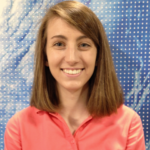By Alison Spencer. Transforming anatomy classes. Developing curriculum management systems. These are just two examples of how the Technology Enhanced Education (TEE) team at UC San Francisco serves as a partner in medical education. “Our mission is to enhance medical education using technology and to support the whole digital curriculum,” said Christian Burke, director of TEE’s Technology Innovations.
TEE has implemented projects like Ilios, a robust curriculum management system currently used by dozens of other schools. Another program shows medical students how they measure up to their classmates in knowledge of various topics. TEE has also created online training materials for faculty on how to teach with technology.
Innovation is at the core of UCSF’s renown as a leader in medication education. In recent years, UCSF began bringing in experts for every topic discussed in a course, rather than relying on one or two faculty members. TEE supports this model using videoconferencing to connect with experts at other institutions and to enable UCSF faculty to give lectures beyond the campus. “The videoconferencing system will also connect the various labs and campuses of UCSF for clinicians who want to check in with teams, their faculty coaches, and people working far away, such as at UCSF’s center in Fresno,” Burke said.
Recently, Burke and his team implemented a virtual reality application for anatomy students. “There are a lot of ways to get 2D anatomy representations through apps, but the need to learn is in 3D, and our faculty said students weren’t getting that as much as they wanted them to,” said Burke. TEE started investigating and learned that VR is becoming more practical as equipment prices have dropped from tens of thousands of dollars to under a hundred.
Burke and his team members, Megan O’Conner and Greg Gadwood, also found that another medical school had developed exactly what they were looking for – a virtual reality application with accurate anatomy structures. “When we brought this in, faculty and students loved it,” said Burke. They began testing the new application over summer, and faculty started using it in the curriculum this fall.
So far, feedback has been positive. Students appreciate the VR anatomy lab, where they can virtually peel back distinct layers and tissues, since with cadavers it can be hard for students to identify different body parts, due to the preservation process. It’s also important that students learn anatomy in three dimensions, as this greatly helps them in a clinical setting. As of now the VR learning component is optional, and around half of the class has chosen to try it. “According to online surveys, 90% of students who tried the application really liked it, found it easy to use, and had no discomfort,” Burke said. Around 10% of students did experience motion sickness. The problem stems from the way the headgear is set up – it determines what the user is looking at by where the user’s ear is. Ten percent of students also reported difficulty seeing clearly with the headset. “We are addressing these issues as we build our own system,” Burke said.
Technology Enhanced Education isn’t the only UC group exploring virtual reality technologies. The Gazzaley Lab at UCSF is developing FDA approved games for therapy that utilize virtual reality. At UC Berkeley, some labs are researching the physics of virtual reality. “We’re looking at ideas from other institutions as well, like the idea some companies have had of using virtual reality for embodied experiences, to allow clinicians to experience life as their patients,” said Burke.
For TEE, innovation is all in a day’s work.
Please visit us: http://meded.ucsf.edu/tee
 Alison Spencer is a UC Berkeley student intern at the UC Office of the President.
Alison Spencer is a UC Berkeley student intern at the UC Office of the President.








What is the VR anatomy app that UCSF has licensed? And on what VR platform/device(s) does it run?